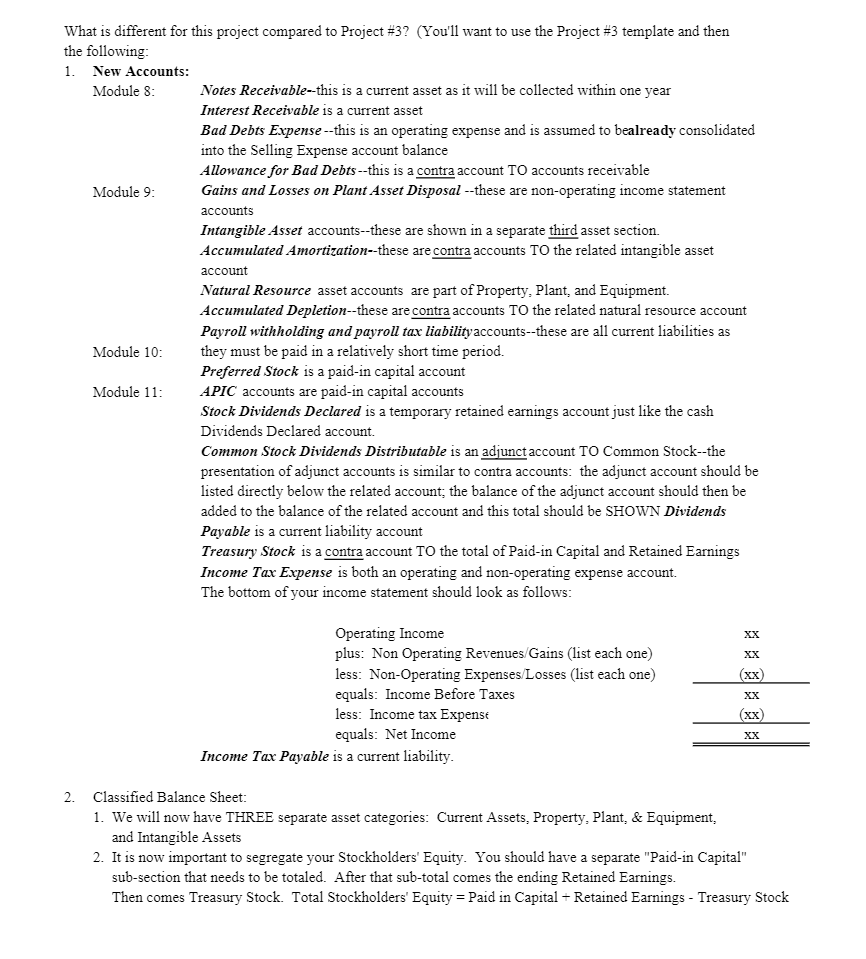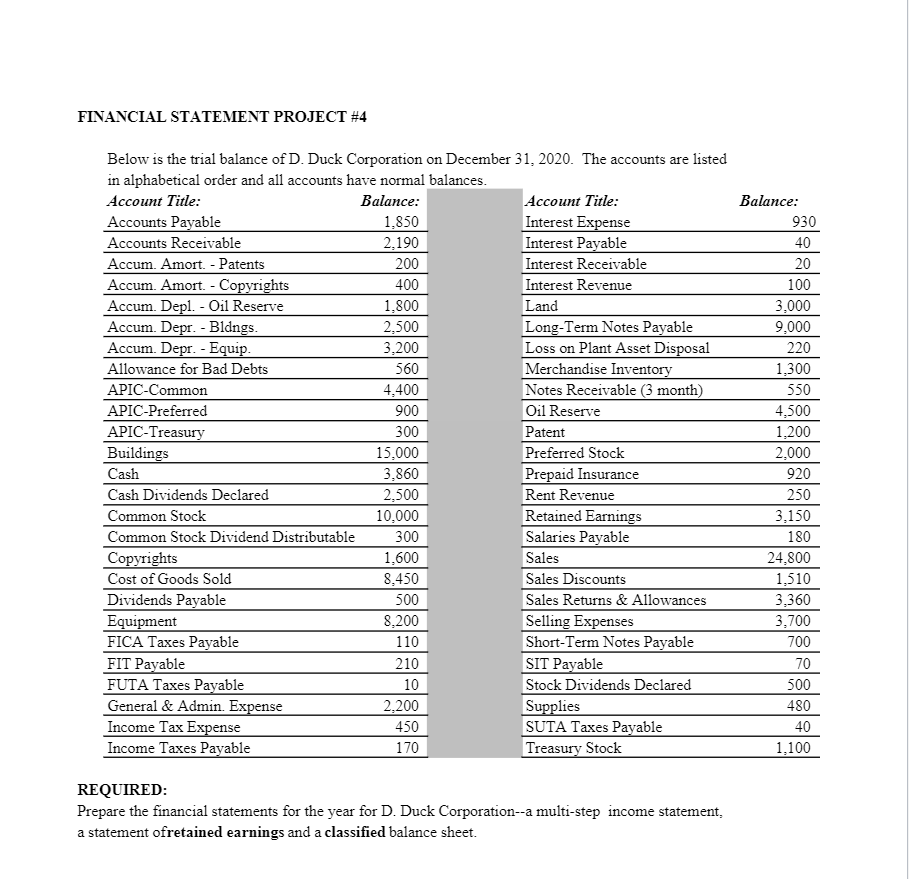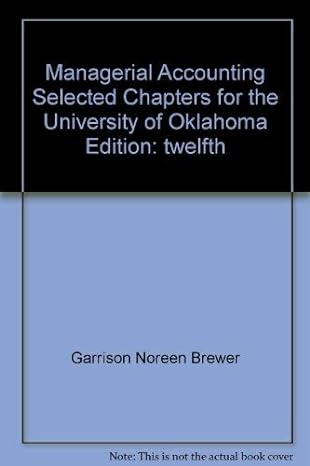

What is different for this project compared to Project #3? (You'll want to use the Project #3 template and then the following: 1. New Accounts: Module 8: Notes Receivable--this is a current asset as it will be collected within one year Interest Receivable is a current asset Bad Debts Expense -- this is an operating expense and is assumed to bealready consolidated into the Selling Expense account balance Allowance for Bad Debts--this is a contra account To accounts receivable Module 9: Gains and Losses on Plant Asset Disposal --these are non-operating income statement accounts Intangible Asset accounts--these are shown in a separate third asset section. Accumulated Amortization--these are contra accounts To the related intangible asset account Natural Resource asset accounts are part of Property, Plant, and Equipment. Accumulated Depletion--these are contra accounts TO the related natural resource account Payroll withholding and payroll tax liability accounts--these are all current liabilities as Module 10: they must be paid in a relatively short time period. Preferred Stock is a paid-in capital account Module 11: APIC accounts are paid-in capital accounts Stock Dividends Declared is a temporary retained earnings account just like the cash Dividends Declared account. Common Stock Dividends Distributable is an adjunct account TO Common Stock--the presentation of adjunct accounts is similar to contra accounts: the adjunct account should be listed directly below the related account; the balance of the adjunct account should then be added to the balance of the related account and this total should be SHOWN Dividends Payable is a current liability account Treasury Stock is a contra account TO the total of Paid-in Capital and Retained Earnings Income Tax Expense is both an operating and non-operating expense account. The bottom of your income statement should look as follows: XX (xx) Operating Income plus: Non Operating Revenues/Gains (list each one) less: Non-Operating Expenses/Losses (list each one) equals: Income Before Taxes less: Income tax Expense equals: Net Income Income Tax Payable is a current liability. (xx) XX 2. Classified Balance Sheet: 1. We will now have THREE separate asset categories: Current Assets, Property, Plant, & Equipment, and Intangible Assets 2. It is now important to segregate your Stockholders' Equity. You should have a separate "Paid-in Capital" sub-section that needs to be totaled. After that sub-total comes the ending Retained Earnings. Then comes Treasury Stock. Total Stockholders' Equity = Paid in Capital - Retained Earnings - Treasury Stock FINANCIAL STATEMENT PROJECT #4 Below is the trial balance of D. Duck Corporation on December 31, 2020. The accounts are listed in alphabetical order and all accounts have normal balances. Account Title: Balance: Account Title: Accounts Payable 1.850 Interest Expense Accounts Receivable 2,190 Interest Payable Accum. Amort. - Patents 200 Interest Receivable Accum. Amort. - Copyrights 400 Interest Revenue Accum. Depl. - Oil Reserve 1.800 Land Accum. Depr.- Bldngs. 2,500 Long-Term Notes Payable Accum. Depr.- Equip. 3,200 Loss on Plant Asset Disposal Allowance for Bad Debts 560 Merchandise Inventory APIC-Common 4.400 Notes Receivable (3 month) APIC-Preferred 900 Oil Reserve APIC-Treasury 300 Patent Buildings 15,000 Preferred Stock Cash 3,860 Prepaid Insurance Cash Dividends Declared 2.500 Rent Revenue Common Stock 10,000 Retained Earnings Common Stock Dividend Distributable 300 Salaries Payable Copyrights 1,600 Sales Cost of Goods Sold 8.450 Sales Discounts Dividends Payable 500 Sales Returns & Allowances Equipment 8,200 Selling Expenses FICA Taxes Payable 110 Short-Term Notes Payable FIT Payable 210 SIT Payable FUTA Taxes Payable 10 Stock Dividends Declared General & Admin. Expense 2.200 Supplies Income Tax Expense 450 SUTA Taxes Payable Income Taxes Payable 170 Treasury Stock Balance: 930 40 20 100 3,000 9,000 220 1,300 550 4,500 1,200 2,000 920 250 3,150 180 24.800 1,510 3,360 3,700 700 70 500 480 40 1,100 REQUIRED: Prepare the financial statements for the year for D. Duck Corporation--a multi-step income statement, a statement ofretained earnings and a classified balance sheet








